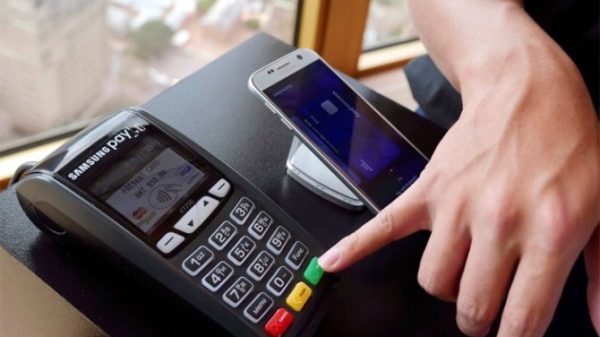
This is Part 3 of a series of analysis by Anand Venkatanarayanan related to claims made about Aadhaar. Read Part 1 and Part 2, which were written in response to statements made by former UIDAI head Nandan Nilekani.
*
The Government of India has argued in the Supreme Court and in Parliament that its primary purpose in promoting Aadhaar is to improve the efficiency of social schemes, and that the use of Aadhaar has generated huge savings since 2014.
The UIDAI (in a statement), its CEO Dr ABP Pandey (in a column) and the Attorney General of India (in the Supreme Court) have claimed that use of Aadhaar since 2014 has generated huge savings. This claim has even been repeated frequently by Nandan Nilekani (here, here and here). Of this figure, ₹26,408 crore (over half) is attributed (Rajya Sabha Starred Question 384, dated 07.04.17) to savings from the PAHAL (Pratyaksh Hanstantrit Labh) scheme.
Understanding the PAHAL Scheme
Most of the LPG cylinders sold to households by the Oil Marketing companies (OMCs), like BPCL, IOCL and HPCL, has an inherent subsidy component built into it.
Every household is currently entitled to purchase up to 12 subsidised LPG cylinders a year, which are sold at a price fixed by the government. Under the PAHAL scheme (also known as the Direct Benefit Transfer or DBT), this subsidy is no longer included in the price of a cylinder, but is instead provided to the consumer by bank transfer, with the consumer then paying the full cylinder price.
Initially every LPG connection was required to seed the bank account number of the connection holder to enable direct transfer of the subsidy. It was then determined that the best way to identify multiple connections with the same holder is to link the UID of the holder to the LPG connection.
Since UID is almost always unique for an individual, it was assumed that the linking will eliminate multiple connections and will reduce demand for subsidised cylinders which in turn will result in the subsidy outflow. This reduction in subsidy outflow is referred to as savings from UID on the LPG scheme.
Understanding the impact of the UID on the PAHAL scheme
An audit of the savings claim for the entire PAHAL scheme done by CAG for the period April — December 2015, points out that most of the savings (92%) is because of the fall in LPG price in the international market, and only 8% (₹1764 Crore) can be attributed to various initiatives (UID being just one among them) that reduced demand for subsidised cylinders. An IISD study however estimated the savings generated only by using UID is even lower (₹120 Crore) during this period.
It is possible to understand the impact of the UID on the PAHAL scheme, and compute an updated savings figure, by using publicly available data from the Government of India.
1. How much savings does Government of India claim Aadhaar has enabled in LPG subsidy?
Since 2015, the Government Of India has produced several different claims for the amount saved through the use of Aadhaar in PAHAL. The most recent (RS Starred Question 384, on 07.04.17) ₹26,408 crore savings claim is composed of three separate figures:

2. How is the above figure calculated?
Government Of India has provided supporting calculations for ₹14672 Crores and ₹6912 Crores, but has not provided any for the FY 2017 figure of ₹4284 Crores.
The calculations for FY 2014-15 and FY 2015-16 are provided below:


Hence the formula adopted for calculating savings is as follows:
Savings = Blocked connections x Duration x Subsidised Cylinders x Subsidy per Cylinder
3. Why the above figure is inaccurate
Every single one of the data points used in the above calculation is inaccurate as explained below:
Blocked Connections
All inactive connections have been inaccurately classified as having been active connections illegally drawing subsidised LPG prior to the launch of PAHAL, when Government Of India’s own figures show that 1.02 Crore (in 2012) had been inactive for years and the majority of the remainder were inactive for reasons unconnected to PAHAL or Aadhaar. This is also reiterated by CAG report(on page 46)

Hence the government’s estimate of connections blocked because of UID is much lower than they have claimed, since they attributed inactive connections and blocked connections through other means from 2012 as blocked by UID.
Duration
The calculations then assume that this incorrect figure for blocked connections applied to the whole year, when in FY 2014-15 PAHAL was only introduced in all districts on 01.01.15.
Hence the Government of India’s claim that PAHAL savings can be calculated for the whole year is not accurate, since the scheme was not even functional for the first 9 months.
Subsidised Cylinders
The calculations assume each connection would have used the maximum of 12 subsidised cylinders, but the CAG reports (Page vi), the average consumption per connection for FY 2014-15 as 6.27 subsidised cylinders.
Since the savings figure is for the entire national average, using the full quota of cylinders for blocked accounts is inaccurate. This is also emphasized by the CAG report (Page 45, 46).

Subsidy per cylinder
The calculations apply the average annual subsidy per cylinder figure rather than the relevant monthly subsidy per cylinder figure.
An account is considered as UID seeded, only when it is linked with UID. Government of India reports these accounts on a monthly basis (See DBT reports). Only when an account is seeded, it could be blocked, if it is identified as a duplicate. Only when it is blocked, the subsidy outgo to the account can be considered as savings.
Since seeded accounts vary on a month by month basis, the blocked accounts also vary on a monthly basis. As LPG prices also vary substantially on a monthly basis without any bound or range, the subsidy provided also varies accordingly. Further when monthly figures are available, it would be far more accurate to use these, than rely on an average figure.
Hence using the average annual subsidy figure as done by Government Of India is inaccurate.
4. How to calculate correct figure for UID savings
We can calculate UID savings in PAHAL by using the same formula used by Government of India to calculate savings.
Savings = Blocked connections x Duration x Subsidised Cylinders x Subsidy per Cylinder
Blocked Connections
The CAG report (Page 26, Table 8), shows that the number of suspected duplicates identified was 4.4 crore, of which a maximum of approximately 1 crore had been blocked as of 30.10.2015. This figure is also confirmed by the response to an Unstarred Question 2459 in the Lok Sabha, on 14.12.15.
Almost all of these suspected duplicates were identified through a non-Aadhaar based process that began back in 2010 (Click next) and was expanded in 2012. This process de-duplicated LPG connections on the basis of name and address and later bank IFSC and account number (more details are provided here).
Hence from Government Of India’s own data we know that, UID deduplication was responsible for finding and blocking only a fraction of the total duplicates blocked (which in turn represented less than one-third of the connections classed as inactive).
There are four data points available in the public domain on how efficient UID deduplication is:
- An ET report on October 2013, claimed that 45,000 duplicates were detected and half of them were removed out of 50L seeded accounts, a detection rate of (22500/50L = 0.45%)
- Dhande committee report on May 2014 (Page 22, Section 3.2.2), claimed that 6.18 Lakhs of duplicate accounts detected and half of them were eliminated out of 44 Million UID seeded accounts, a detection rate of 3.09L/440L = 0.7%.
- In an affidavit to Supreme Court on July 2015, Government Of India claimed 8L duplicate accounts were detected and half of them were eliminated out of 8.08 Crore, a detection rate of 4L/8.08 Crore = 0.5%.
- DBT cabinet secretary note on November 2015, which apart for being the latest and best also provided means to do a detailed computation of UID efficiency compared to other efforts as shown below:

With this data, it is possible to compute blocked connections using the formula:
Blocked Connections = Seeded Connections x Blocking Efficiency (0.60%)
Duration
The duration of any savings attributable to UID in DBTL/PAHAL is calculated from the point at which the program was introduced nationwide on 01.01.2015 (See CAG report, Page 45, Chapter 9).
Aadhaar seeded connections however vary on a monthly basis (see DBT reports) as shown below for FY2015 and FY2016. Hence we will be calculating the savings figure on a monthly basis and sum it up for the entire year, using the correct figures for a given year.

Subsidised cylinders
We will be applying the average rate of consumption per connection for FY 2014-15 as reported here by CAG (Page vi). The yearly average of consumption per connection is 6.27 subsidised cylinders (it is capped at 12 cylinders per connection). Since the yearly average is 6.27 cylinders per connection, the monthly average is 6.27 / 12 = 0.5225.
Ideally if monthly consumption figures were available nationwide (they are not), it would have been more accurate to use those numbers, than relying on a monthly average. However our purpose is to compute subsidy outflow and the number of subsidised cylinders is capped to 12 / year / connection. This cap limits the effect of overestimating or underestimating the usage as the variation across months always gets smoothened out to the national average at the end of the year.
Subsidy per cylinder
Subsidy per cylinder in a given month is obtained by referring to the under-recoveries reported by the petroleum planning cell (Domestic LPG price column). OMCs refer to under-recoveries as the subsidy paid to the consumers and revise it every month based on price of LPG in the international market.
Typically average numbers work very well if the upper and the lower bound are constrained. However we do know that the LPG prices in the international market neither have an upper bound nor a lower bound. Also average numbers are less accurate, when monthly figures are available.
5. What is the correct figure for UID savings?
2014 – 2015
We begin by noting that the scheme was only functional for 3 months from 1/1/2015 (See CAG report, Page 45, Chapter 9).
The exact number of connections seeded with UID on January 2015 is not available from Government of India and hence we need to do linear extrapolation.
For instance, UID seeding of LPG connections in Feb 2014 was 6 Crore, and increased to 8.49 crores (8,49,33,355) by March 2015 (PAHAL Total beneficiaries with bank account). Since the earlier DBT scheme was suspended on Feb 2014 by Supreme Court orders, we can reasonably assume that the UID seeding of LPG accounts stayed at 6 Crore until 31/12/2014.
The connections which are then UID Seeded per month can then be shown, using the linear rate (8.49 – 6) Crores / 3 months = 83,11,118 / month.
We can now calculate the savings generated by UID using the table below:

This is why the CAG fully discounted (Chapter 9, Page 45) the entire savings generated by the PAHAL scheme in the audit report (not just UID savings).

2015 – 2016
UID seeding data for all schemes is published in the DBT website (See DBT Reports on the bottom). Since seeding data is available only from September 2015, we again have to do linear extrapolation between April 2015 and September 2015 with a monthly addition of 9,58,58,820 – 8,49,33,355 / 6 months = 18,20,910.
Subsidy per cylinder for the period is obtained by referring to data produced by Petroleum planning and analysis cell for the relevant months.
The table below shows the savings because of UID for this period.

2016 – 2017
By using the same methodology with seeding data published in the DBT website for the relevant months and subsidy data, we can compute the savings as shown below:

Conclusion
As discussed above, estimated savings generated in the PAHAL scheme by only using UID has been overstated by a factor of 200 times. It is also possible using our methodology to compute the range of estimated savings as shown below, using various deduplication rates as reported by ET report and the cabinet secretary note.

We can now put together a rough balance sheet on the financial impact of using UID to various stakeholders in the LPG scheme.

Government Of India also reports additional expenditure (Page 80) associated with PAHAL, shown below (in crores):

Hence the expenditure to introduce PAHAL is about ₹6831 Crores which is approximately $1 Billion. Also the expenditure incurred in the transfer of the entire subsidy amount (not just the savings) as commission to the banks, is about 2% of the subsidy amount. These costs were not considered in this analysis as they are related to the entire PAHAL scheme and not just on the use of UID in the scheme.
Acknowledgments and References
- Data from the Twitter handle India subsidy data.
- CAG Report on PAHAL.
- IISD report on October 2015, February 2016, March 2016.
- Raw excel sheet with all the calculations
*
[Anand V is a Senior engineer at NetApp. Views expressed in this article are personal and does not reflect the views of his employer]
[This article is released under CC-BY license. You may repost this article in entirety as long as the above disclaimer is mentioned with attribution to the author and a link to the original article which appeared in Medianama]
Updates: A table was missing from the story, which has now been included.































